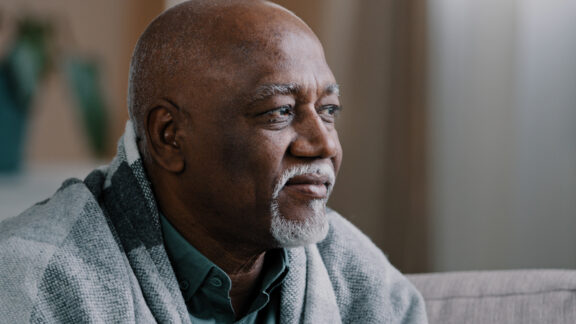Recent research shows that experiencing nature relieves pain. While immersion in the outdoors is the ideal, virtual nature helps, too. Mother Nature may not make us chicken soup, but she helps heal us in other ways. Writer Shalini Narang explains.
Two recent research reports highlight the importance of nature in relieving physical pain. One study noted the power of nature videos in reducing pain and the other looked at how time spent in natural spaces could alleviate chronic lower back pain.
Even virtual nature relieves pain
Experiencing real and virtual nature can lessen acute physical pain, according to recent research findings reported in Science Daily (2025). The results confirm that nature-based therapies can be used as promising complementary approaches to pain management.
The benefits were observed in subjects watching nature videos, as compared with subjects watching indoor or urban scenes. “The participants rated the pain while their brain activity was measured using functional magnetic resonance imaging,” the study said. “The results were clear: when viewing the nature scene, the participants not only reported less pain but also showed reduced activity in brain regions associated with pain processing.”
Max Steininger, study lead at University of Vienna, explained:
Pain is like a puzzle, made up of different pieces that are processed differently in the brain. Some pieces relate to our emotional response to pain, such as how unpleasant we find it. Other pieces correspond to the physical signals underlying the painful experience, such as its location in the body and its intensity. Unlike placebos, which usually change our emotional response to pain, viewing nature changed how the brain processed early, raw sensory signals of pain. Thus, the effect appears to be less influenced by participants’ expectations, and more by changes in the underlying pain signals.
The impact of nature on relieving chronic lower back pain
Research published in The Journal of Pain (2025) highlights that accessing nature spaces is important in the self-management of chronic low back pain. Further, they looked at patients for whom nature was inaccessible – due to disability, environmental obstacles, hazards, or proximity – and at solutions, including improving accessibility and developing interventions such as virtual reality therapy.
The researchers found that people who can get out in nature have reported that it aided them in multiple ways, many of which also tempered the pain.
First, it helped them to connect with others on a social level and minimized the feeling of being isolated from the world. As study participant Kate said, “I think [chronic low back pain] can bring you down and you can just switch off from the world, and don’t wanna communicate with anyone. … So, I think going in the garden does give me that little lift, to keep connected to the world really.”
 Second, exercising in nature provided more holistic benefits than exercising in the gym. “There’s definitely a difference between exercise that you got from going out in nature versus exercise that you got from going to a gym,” reported June. But after a gym workout, “you don’t come back feeling as happy as you did when you [exercise in nature].”
Second, exercising in nature provided more holistic benefits than exercising in the gym. “There’s definitely a difference between exercise that you got from going out in nature versus exercise that you got from going to a gym,” reported June. But after a gym workout, “you don’t come back feeling as happy as you did when you [exercise in nature].”
Maya added, “I think fresh air helps. I do feel like being outdoors is helpful for back pain, you get to exercise it out.”
Time in nature also provided distraction and a sense of escapism, especially in natural spaces that were “captivating or absorbing,” with birds, trees, water etc. that provide a sense of tranquility. “It’s a secluded spot that I’m away from the world and seeing how the flowers are coming on and the insects, and the birds,” reported Kate. “So, it is that connection with something … that break from everything.”
Said Sara, “You kind of lose yourself when you’re gardening. So, you’re outdoors in the air, in any weather. See, your mind’s occupied.”
The same immersive features also reduced stress and improved mood. “[Nature] helps my mood,” said Emma. “If I’m struggling with the pain or for whatever reason I’m not feeling very positive, if I can get out and about in the countryside and get some fresh air … it does make me feel better mentally … it must help with the pain in turn.”
“I can go days without going out,” reported Kate, “but when I do go out, I realise I’ve got very down and just in that root rut.”
Accessibility issues and takeaways
However, while nature relieves pain, it can be difficult for some people to access that form of therapy. Study participants reported accessibility concerns, with factors such as uneven terrain and a lack of seating reducing their enjoyment of and making them less inclined to visit certain places. Lack of proximity to green spaces was also an issue.
Based on the findings, the researchers recommend that people with chronic lower back pain and the clinicians treating them consider nature’s role in enhancing their health and well-being. The findings also point to the importance of making natural spaces more accessible.
Said Alexander Smith, Lead Study Author and Researcher in the University of Plymouth’s School of Psychology:
Lower back pain, like many other forms of physical discomfort, can be debilitating, isolating, and exhausting. Amid a push for novel and more holistic therapies to treat chronic pain, nature has been suggested as a potential option. Our research showed that those able to get out into nature saw the benefits of doing so, both from a physical and a mental perspective. Simple changes, such as better paths and seating, and technological innovations including virtual reality may help make those benefits accessible to everyone. But we hope our findings open the door to greater exploration of how that might be achieved.
Nature relieves pain – and more
The Japanese term Shinrin-yoku (forest bathing) is a way of being in nature that is more about being there than getting there. There is a growing body of research demonstrating the holistic health benefits of this practice. Physically, it can help in regulating the nervous system, which in turn strengthens the immune system, to positive cardiovascular effects. Mentally, nature aids in lifting spirits, reducing anxiety, and encouraging feelings of joy. In fact, forest bathing has been cited as an alternative strategy to managing the risk of hypertension in older adults by inducing relaxation and normalizing blood pressure levels.
Related: The Value of Time Outdoors




